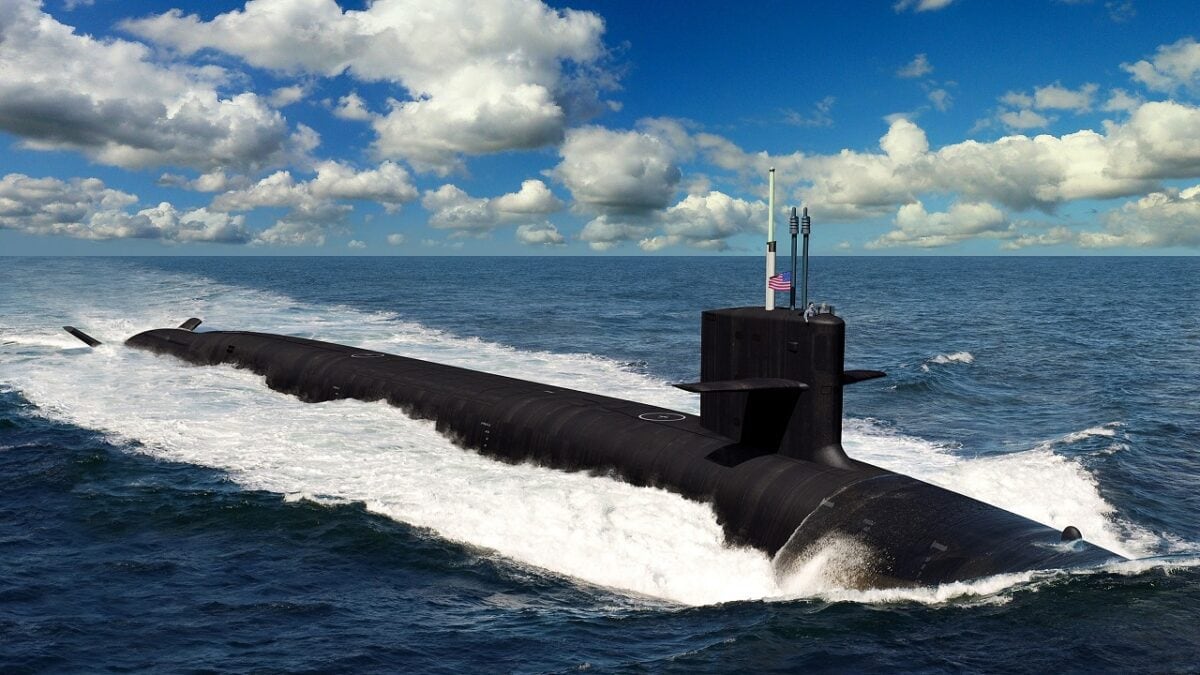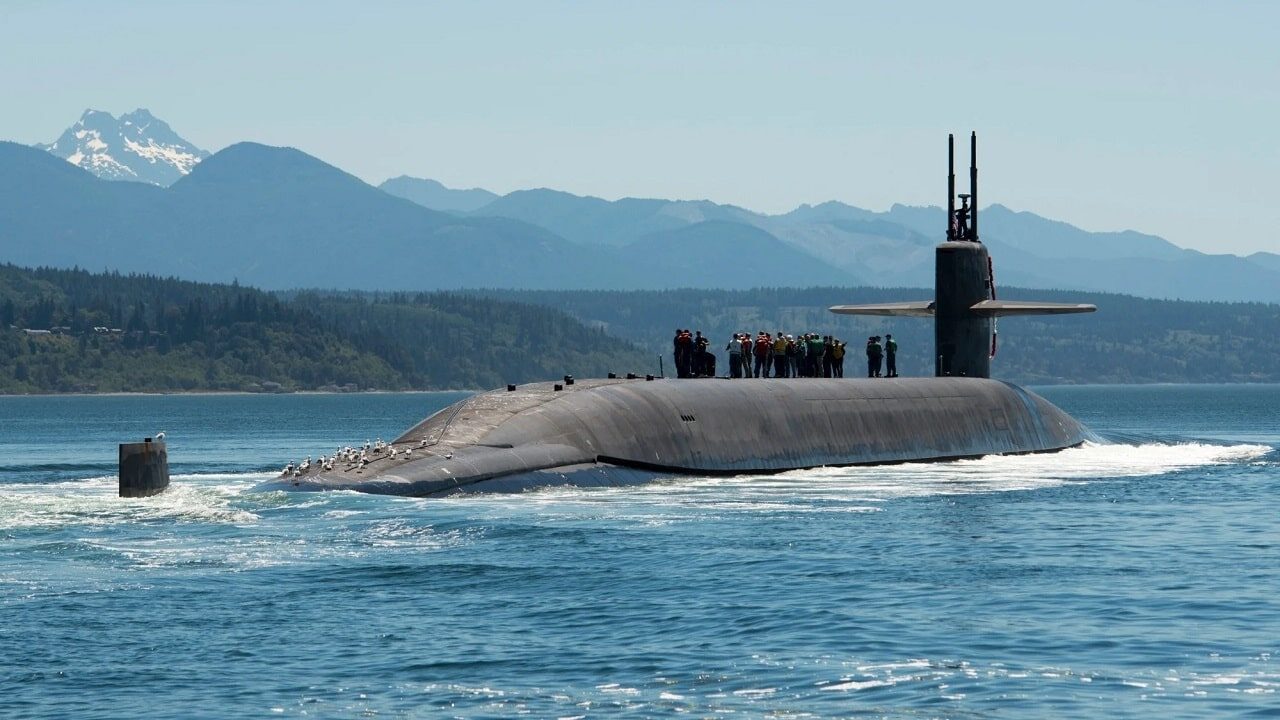19FortyFive reached out to two world-class experts: What’s better than purchasing one submarine at a time? How about buying five at once? That’s what the U.S. Navy wants to do with the Columbia-class ballistic missile submarine that aims to replace the older Ohio-class submarine.
Navy brass believes that if Congress approves of the “block buy” the order could save billions of dollars rather than ordering one sub at a time, which is the traditional acquisition practice.
Columbia-Class Block Buys Can Reduce the Risk of Schedule Slips
The Navy acknowledges there is a risk of replacing the Columbia-class with the Ohio-class on a one-for-one basis.
If there is a budget or schedule slip, each Columbia-class submarine may not replace the Ohios before the end of the decade.
The first Ohio-class retirement is supposed to happen in 2027. A block buy of five hulls could mitigate this risk in a cost-effective manner.
What Is a Block Buy?
Block buys are a single contract rather than five separate agreements for individual buys. It primes the pump in the acquisition process to reduce the wait on lead times for parts and components. The naval industrial base can better plan for the future and order the materials it needs to make all five submarines without the risks inherent in supply chain delays.
Columbia-class comes at a steep unit cost of around nine to ten billion dollars, so any savings are welcome. The idea with the block buy is to reduce this bottom line number and allow the suppliers to predict their workflows and staffing needs.
We Are Talking About A Big Investment for this Submarine
The Navy has budgeted a whopping $128 billion factoring in inflation, including research and development investment, for 12 new Columbia-class subs. The build is a top priority for the navy.
Funding began in FY17. The main issue that Congress must reconcile is the steep up front cost of a five-sub-block buy. The Navy needs other new ships and lawmakers may want to space out the Columbia-class buys rather than get boxed in with a large upfront payment. This decision-making calculus assumes that each Columbia-class sub comes in on time once the block buy is approved. Ordering a five-hull batch at once achieves manufacturing economies of scale that would save money.
James R. Holmes, the J. C. Wylie Chair of Maritime Strategy at the Naval War College, said the acquisition strategy has its pluses and minuses.
“The chief advantage is that buying in bulk provides predictability for the service, and especially for the shipbuilding industry. Look at it through industry chiefs’ eyes. Predictability lets shipbuilders do things like order materiel well in advance, taking advantage of economies of scale; to build new infrastructure if necessary; and to hire and retain the right number of skilled workers. The herky-jerky approach, one hull at a time, removes predictability and thus drives up costs and makes the labor situation uncertain. Shipbuilding is a type of mass production, and mass production works best in a steady-state environment,” Holmes explained.
“The chief disadvantage, he said, “is the evil twin of the chief advantage: it does mean committing taxpayer money to a program far in advance, when by definition you don’t know for sure what the nation’s fiscal situation will be. That’s why there will always be skeptics in Congress regarding block buys. Lawmakers like flexibility even when it comes at a cost.”
This Boomer Brings the Doom
The Columbia-class submarines are the largest ever built by the United States – 560 feet long with a beam of 43 feet and displacement of 20,810 tons. The Navy wants the nuclear-tipped ballistic missile boats to serve into the 2070s as a significant part of the future nuclear triad. Boomers will carry 70 percent of the intercontinental ballistic missiles.
The Columbia-class will deploy with the Trident II D5 fleet intercontinental ballistic missile, and it can fire the Mk 48 heavyweight torpedo. There will be fewer vertical launch tubes to further save on maintenance costs (16 versus 20 on the Ohio-class). The new boomers will also not require a mid-life refueling period for its nuclear reactor which can take two years to perform. This life-of-ship reactor will save millions of dollars in maintenance costs and enable it to propel the sub for 42 years.

An artist rendering of the future U.S. Navy Columbia-class ballistic missile submarines. The 12 submarines of the Columbia-class will replace the Ohio-class submarines which are reaching their maximum extended service life. It is planned that the construction of USS Columbia (SSBN-826) will begin in in fiscal year 2021, with delivery in fiscal year 2028, and being on patrol in 2031.
USS District of Columbia Is On Schedule
The first boat of the Columbia-class will be called the USS District of Columbia and the second will be the USS Wisconsin. The District of Columbia had its keel laid in June. Wisconsin will begin the procurement process in FY24.
Is the Block Buy a Good Option for the Navy?
I asked Bryan McGrath his thoughts on the Columbia-class block purchase. McGrath is the managing director of the FerryBridge Group and a former naval officer who spent 21 years in the navy, including command of the USS Bulkeley.
“It is a good idea to block buy SSBNs because it helps create predictable work cycles for shipyards, and it saves taxpayers’ money. I assume that it will be very quiet and very powerful, which are the most important virtues of the sub. The SSBN is the most important leg of our nuclear triad. It is well worth the cost,” McGrath said.
The block buy will need permission from Congress and that could be a hold-up. But if the navy can tell a compelling story about why this kind of purchase is advantageous, lawmakers may support the decision in the next National Defense Authorization Act for FY24. The Columbia-class has a tight window for production in order to replace the Ohio-class on time, the block buy would give it a leg up to hit manufacturing milestones in the coming years.
Expert Biography: Serving as 1945’s Defense and National Security Editor, Dr. Brent M. Eastwood is the author of Humans, Machines, and Data: Future Trends in Warfare. He is an Emerging Threats expert and former U.S. Army Infantry officer. You can follow him on Twitter @BMEastwood. He holds a Ph.D. in Political Science and Foreign Policy/ International Relations.

